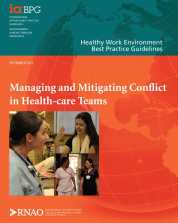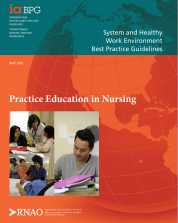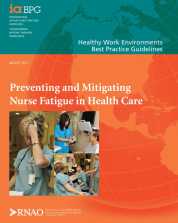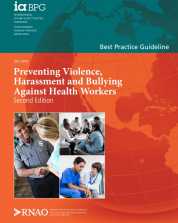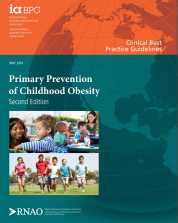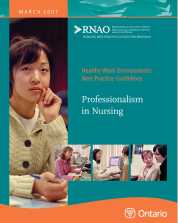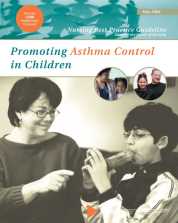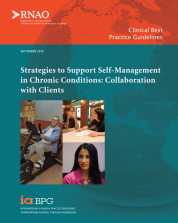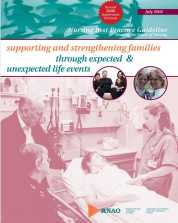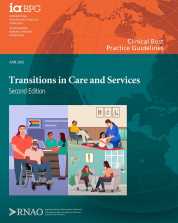The purpose of this best practice guideline (BPG) is to manage and mitigate interpersonal conflict among healthcare teams with the view that while some conflict is preventable, healthy conflict can also be beneficial.
The purpose of this best practice guideline (BPG) is to provide evidence-based recommendations that promote and sustain the undergraduate nursing student’s application of knowledge to practice in a variety of clinical learning environments. The guideline explores the relationships among and between students and nursing educators, nursing staff, preceptors and diverse health-care team members, and it considers their influence on the quality of practice education, professional socialization and nursing excellence.
The purpose of this best practice guideline (BPG) is to identify and describe: practices that result in preventing and mitigating fatigue for nurses and other health-care professionals; system resources that support practices to prevent fatigue; organizational culture, values and resources that support effective practices to prevent fatigue; personal resources that can be used to prevent or mitigate fatigue; and anticipated outcomes when fatigue is effectively managed.
The purpose of this best practice guideline (BPG) is to enhance the safety of health service organizations and academic institutions through the adoption of evidence-based practices. Safe and healthy work environments are an enabler for nurses and other health workers to optimize clinical outcomes for those receiving care. Such environments also optimize teaching and learning in academic settings. Specifically, the guideline will address how to recognize, prevent, and manage violence, harassment and bullying in the workplace.
The purpose of this best practice guideline (BPG) is to provide nurses across all practice settings with evidence-based practice, education, system, organization and policy recommendations for the primary prevention of obesity in infants, preschool, and elementary-school-aged children.
The purpose of this best practice guideline (BPG) is: to identify the concept of professionalism as a guiding tenet that enhances outcomes for nurses, patients, organizations and systems; to define the attributes of professionalism; to identify and discuss the evidence related to each attribute of professionalism; and to provide strategies for success.
The guideline contains recommendations for registered nurses and registered practical nurses on best nursing practices in the area of paediatric asthma. It is intended for nurses who may not be experts in asthma care and who work in a variety of practice settings across the continuum of care.
The purpose of this best practice guideline (BPG) is to provide evidence-based recommendations for registered nurses and registered practical nurses in self-management support. These recommendations identify strategies and interventions that enhance an individual’s ability to manage their chronic health condition.
The purpose of this best practice guideline (BPG) is to assist nurses in promoting family health through interventions and supports provided during expected as well as unexpected life events. Expected life events may include birth, school, adolescence, aging, and death, while unexpected life events may include trauma/accidents, chronic illness, developmental delay and disability.
The purpose of this best practice guideline (BPG) is to provide evidence-based recommendations for nurses and members of the interprofessional team, organizations and the health system. These recommendations support safe and effective transitions in care for pediatric and adult persons and their support network.
